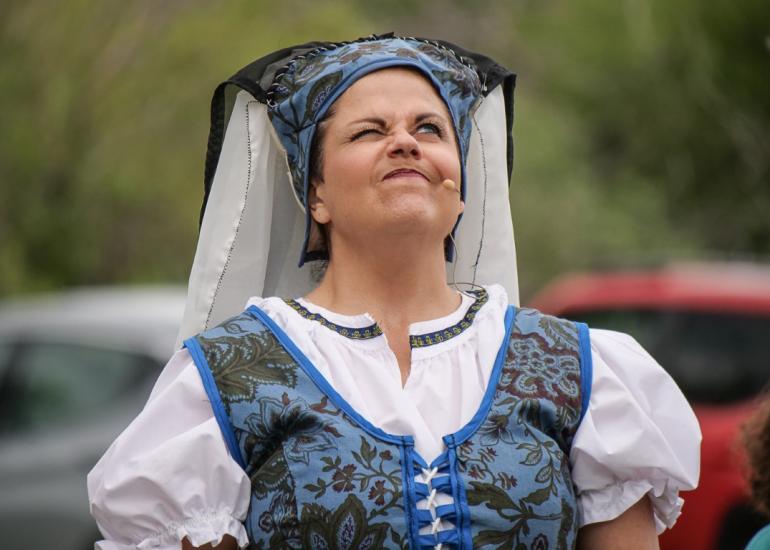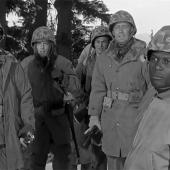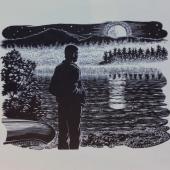Live From the Hi-Line: Montana Actors' Theatre Serves Up Top Quality Theatre

Let’s be honest, the first thing people think about when they think of Montana isn’t great theatre. More likely it’s our mountains and rivers, Glacier or Yellowstone National Park, our copious fish, bison, and bears, our elk, and of course all that famous sky—but theatre?
East of the Rocky Mountains, 40 miles below Canada and 100 miles out on the prairie, Havre, Montana, (pop 10,000) might just be changing all that. One of the best community theatre companies in the country—no joke—Montana Actors’ Theatre was founded in 1992, incorporated as a 501(c)3 in 2001, and is putting the Hill County seat on the map for more than its Amtrack stop and university.
Housed in the Montana State University northern campus’s theater, MAT is without doubt the artistic and cultural engine of the region, providing much-needed quality live entertainment to the agriculturally-based community.
The stats alone are astounding. Since its inception, MAT has put on a whopping 231 shows totaling over 1,407 individual performances while annually casting over 100 community members and racking up what might well be 100,000 volunteer hours. MAT has gone on the road to dozens of rural communities across Montana, like faraway metropolis Shelby and Lewistown, and believe it or not, London, England—truth. Three times, Ed Asner of Mary Tyler Moore fame acted with the group, including his last ever stage appearance before passing away in 2021. Last year, MAT’s production of Macbeth, performed outside in Beaver Creek Park, saw well over 1,300 people in attendance. Marty Rausch, who came across the divide from Alberton, said the opening battle scene with half a dozen horses charging up the creek, riders wielding battle axes, multiple simultaneous sword fights going on surrounding the audience, was, in his words, “the most thrilling theatre I’ve ever seen. The hair on the back of my neck was standing up.”
Jay Pyette is founder and executive director of MAT. Pyette grew up in Chinook, the next town east of Havre (pop. 900) and earned his master’s in theatre arts with a concentration in Shakespeare at the University of Oregon in Eugene. With MAT, he’s played 45 different roles, directed over 70 more, yet most easily defines himself as a playwright. Last year MAT performed his play The Harvest, a contemporary drama about a Montana ranch family, and this year Pyette is writing the annual traveling dinner-theatre show. Soft-spoken with a self-deprecating sense of humor, Pyette is rightfully proud of what MAT means for the windblown communities straddling the Hi-Line. “We help provide a better life in Havre,” he says. “We enrich the quality of life by providing something that wasn’t here before.”
Grant Olson is the artistic director for MAT and agrees. Like Pyette, Olson grew up in the area, in this case just 30 minutes to the south on his father’s ranch in the Bear Paw Mountains. He began acting in high school and would eventually earn a master’s in theatre arts from the Royal Academy of Art & King’s College, London, and turn that into a doctorate. If there was a police lineup and you were asked to pick out the thespian in the group, Olson would be the obvious choice, his handlebar moustache giving him away.

“As artistic director,” Olson says, “I don’t settle for, ‘Oh that’s good enough for Havre,’ because I know Havre audiences travel to New York and London to see plays and I want them to have as good a quality here.”
Quality is the word that keeps popping up over and over again when talking with MAT members. Casey Pratt has been with the company since 2006 and is the technical advisor. Last year he helped design and build a 28’ turntable stage for the production of Stephen King’s Misery. The set itself actually got applause when it turned.
“It’s been MAT’s uncompromising drive to have quality theatre,” Pratt says, “and one of the most common things I hear people say about our productions is that they can’t believe they’re in Havre. It’s a real compliment.”
Pyette is quick to add that with their commitment to quality comes responsibility. “If the community is willing to support us,” he says (which it did to the tune of over $100,000 at last year’s fundraiser), “we have to live up to that.”
Community theatre is a term the group originally shied away from because of the negative connotations, but over the years they have gradually come to embrace it, realizing that what they produce truly is a community endeavor.
“We had lots of discussions about the word community,” Pratt says, “and it all seemed to jell when we decided to embrace it, when we decided we were going to put the community in community theatre.”
Olson puts it this way: “We do theatre for this community, of this community, by this community,” adding, “At one point last year we had 140 or more volunteers working at once between four shows we had in different stages of production.”
One thing that sets MAT apart from many other community theatre companies is its willingness to take risks. “I think one realization we had long ago,” Pyette says, “is we never judge the success of a show on the box office, that can never be the ultimate gauge of whether a show is successful or not.”
“Besides the big crowd pleasers, Sponge Bob, Spam-A-Lot, Mamma Mia, we’ve always liked doing scripts that push boundaries,” Olson says, citing productions like last year’s darkly funny and squirm-worthy Pulitzer Prize-winning August: Osage County, or the provocative Pillowman, or the racially charged play Blue/Orange. “We’ve never been afraid to let an audience walk out of a show,” Olson says.
Putting on original works is yet another hallmark of MAT. “New writing has always been important,” Pyette says, “we’ve always stressed that. And we’re going more and more in that direction because let’s be honest, for a playwright, it’s hard to find those opportunities.”
“For example,” Olson says, “The Harvest [which Pyette wrote] is a universal story, but it’s set in northern Montana and so you get some of those moments that are pure Havre, pure Hill County and Blaine County. It’s nice to have those stories told.”

This coming year three productions will be new writing: Pyette’s comedy, The Queen of Hill County, a Christmas panto by Caroline Tuss, and an adaptation of Moliere’s The Imaginary Invalid, by longtime MAT actor Martin Holt.
But it’s not just adults MAT appeals to. KIDSMAT is the immensely popular series of summer youth camps they run. Casey Pratt’s wife, Angela, is the youth activities director. “It’s always been a thing,” she says, “to bring up that next generation and pass on that love of theatre because it gives them skills, it gives coping skills, it gives social skills, all these things.”
“Theatre gets in your blood,” Angela Pratt says. “We’ve seen it change people, help people. I’ve seen it change students. We had a nonverbal, autistic boy who as a freshman in high school stood by the curtain and said nothing and is now a young man and an amazing actor.”
“What’s fun,” says Pyette, “is you see parents bring their kids to KIDSMAT and I can remember the parents being in KIDSMAT themselves. We’re multigenerational now.”
One of the biggest turns for MAT was in 2003 when it took Pyette’s The Dead of Winter to London. Directed by Olson as a component of his master’s degree, 18 actors from Havre crossed the pond to perform a 15-show run in the Off-West End theatre, The Union. “We got really good reviews,” Olson said, including in Time Out and The Stage, the theatre trade paper.
Closer to home and going forward, MAT is looking to put on shows in as many small towns across the state as they can, especially where they don’t get the opportunity to view live theatre. Even more exciting is the possibility of new digs, a 300-400 seat theatre in the soon to be constructed Aurora Complex on the MSUN campus.
“Northern has been great for us,” Olson says, “but one of the problems is we’re growing out of our space; a 140-seat theatre doesn’t do justice to the shows we want to do.”
“Ultimately, we’re treating everything we do as professionals,” Olson is proud to say. “Because the audience doesn’t care if it’s community theatre or not, they’re paying their hard-earned money to see it and we’re not going to give them an inferior quality.”
Is MAT really that good? Pyette and Olson might be biased, but Olson says without hesitation, “There are productions I’d pluck out of Havre and put them in Minneapolis, or London, or New York, and I feel the quality is on par if not better.”
That being the case, lucky Havre. Lucky Montana.













Leave a Comment Here